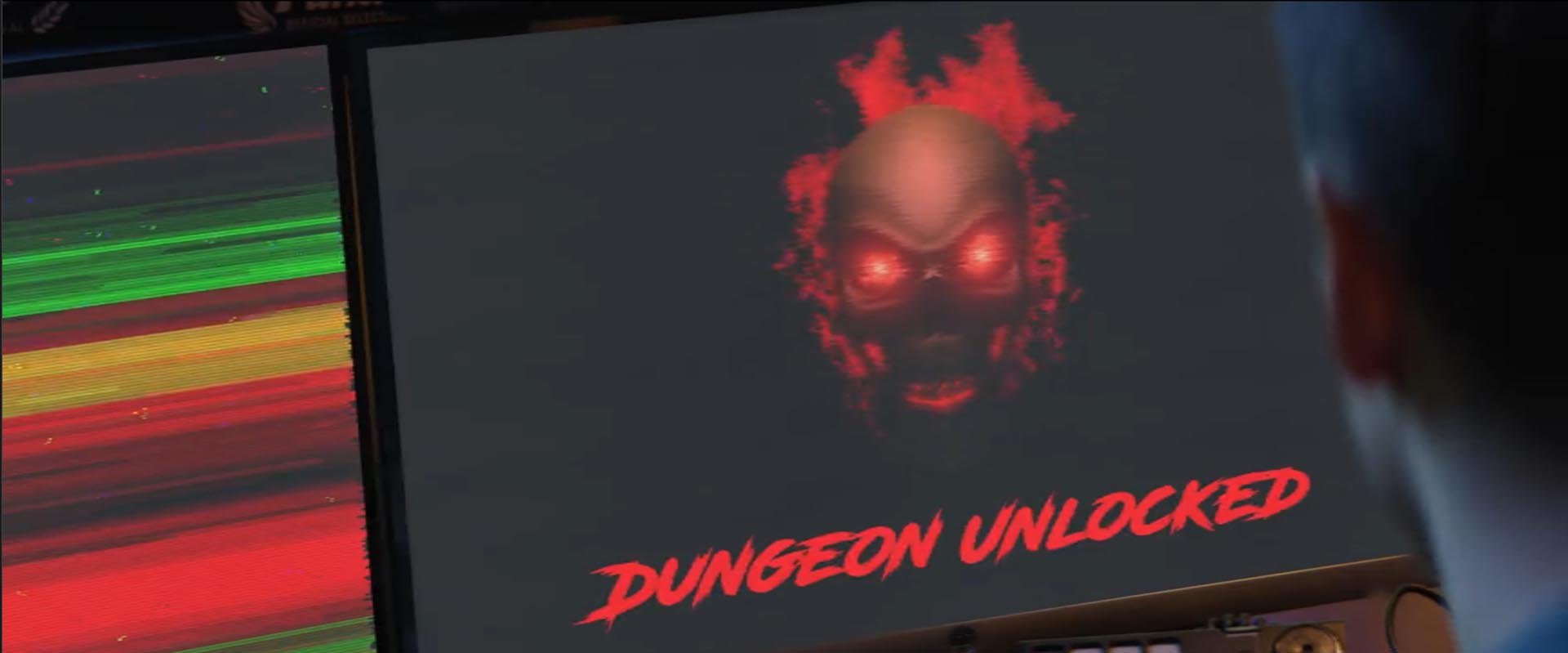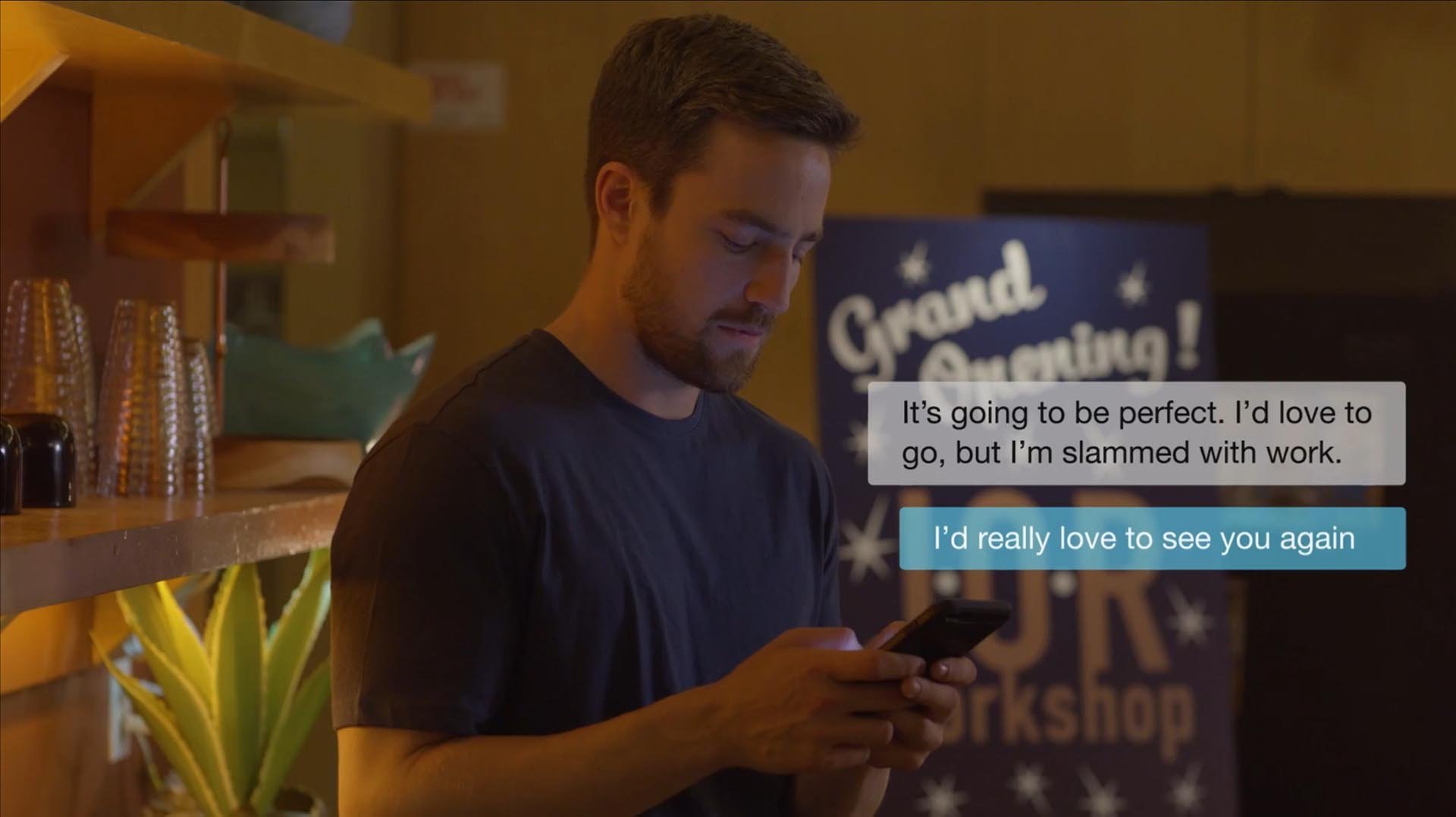Motion Design as a Cinematic Storytelling Tool
At Foxtrot X-Ray, we use motion design to support cinematic storytelling, adding visual clarity and contextual elements that enhance the viewer’s experience without distracting from the narrative.
Our “Motion for Movies” reel here captures the best of the best of our recent work in this specialized area.
Introduction to Motion Design in Storytelling
What is Motion Design in Film?
Motion design is a tool for visually communicating key information, context, and transitions within a film. At Foxtrot X-Ray, we use it to simplify complex ideas, provide context, and integrate subtle design choices that enhance the world of the story without drawing focus from the characters or plot.
How Motion Design Supports Storytelling
Efficient Information Delivery: Motion design allows filmmakers to communicate essential details quickly, providing context or exposition without the need for additional dialogue or scenes.
Visual Consistency: The style, color, and design choices within motion graphics complement the film’s established tone, enhancing the story’s cohesiveness.
Bridging Digital and Physical Worlds: When modern stories incorporate digital elements, motion design brings these on-screen in a clear, seamless way.
Case Study: A Big Fat Family Christmas
Foxtrot X-Ray approached A Big Fat Family Christmas with a focus on crafting motion graphics that supported the story and enhanced the film’s realism. The film follows photographer Liv Rose Chang as she evolves from hiding her Asian heritage in her online identity to fully embracing it in a heartfelt appeal to her audience via a livestream at the end of the story.
The filmmakers’ two goals with this motion design work were to stay consistent with an Instagram-like interface that would be recognizable to the audience without violating Meta’s copyrights, and to show Liv’s community supporting her during the livestream without distracting from the core of Shannon Chan-Kent’s emotional performance.
Instagram Post Motion Design from A Big Fat Family Christmas
Instagram Livestream from A Big Fat Family Christmas
The Role of Motion Graphics in Film
Supporting Storytelling with Visual Information
Motion graphics enhance film by supporting core storytelling elements with clear, organized, and visually consistent information.
Here are some of the ways motion design supports storytelling in subtle, practical ways:
Character and Setting Context: Visual elements in motion design can provide relevant information about a character’s location, background, or context without dialogue.
Scene Transitions: Motion design can aid transitions, smoothing the movement from one scene or story point to another without breaking viewer engagement.
Exposition Made Simple: Motion graphics convey background information or establish setting details concisely and visually, helping audiences stay oriented within the story.
Subtle Tone Reinforcement: Through careful color and style choices, motion design reflects and supports the film’s established tone, whether subtle or bold.
Case Study: Max Reload and the Nether Blasters
Foxtrot X-Ray created dozens of motion graphics elements for Max Reload and the Nether Blasters to bring to life the videogame-infused world of the characters and to tie into the film’s overall “synthwave” aesthetic.
Motion design was also used to deliver exposition, showing the characters’ progression through the various levels and challenges throughout the film.
Kevin Smith as Chuck operates in VR in Max Reload and the Nether Blasters
Nether Dungeon Graphics in Max Reload and the Nether Blasters
Max's Online Hub in Max Reload and the Nether Blasters
Applications of Motion Design in Film
Practical Techniques to Communicate Visual Information
Motion design is adaptable to a variety of uses in film, all focused on delivering visual information in a clear and cohesive manner.
Some practical applications of motion design:
Title Sequences: Set the stage for the film by introducing its themes and visual style, establishing a first impression for audiences.
Visual Exposition: Use animated graphics to convey background or contextual information that would otherwise require dialogue or lengthy scenes.
Subtle Contextual Cues: Introduce elements like locations, timestamps, or settings using graphic overlays that are informative without pulling focus away from what the camera is showing.
Smooth Transitions: Utilize motion design to bridge scenes or story arcs, providing a subtle visual cue to guide the audience through the story.
Max Reload and the Nether Blasters title sequence
Los Angeles establishing shot from Mixed Baggage
Bringing the Digital World On-Screen
Capturing Digital Communication in a Seamless, Cinematic Way
In today’s stories, digital interactions—texting, social media, video calls—are often part of the narrative. Motion design allows filmmakers to present these digital interactions clearly and cohesively, making them feels like a natural part of the visual landscape.
Texting and Messaging
Animated overlays for text conversations provide a way to show messages clearly, while feeling integrated with the visual flow of the film. Text bubbles can be stylized or straightforward, can follow the movement of the phone and the camera or can be static overlays. The possibilities are endless but the goal is the same - delivering texted dialogue in a compelling and understandable way.
Text bubbles in Mixed Baggage
Social Media Feeds
Subtle motion design brings elements like social media feeds, notifications, and comments to life, without breaking cinematic immersion. Whether composited onto a device or presented full-screen, these graphics can convey key story points and tell the audience a lot about the characters’ lives, passions, and concerns quickly and visually.
Instagram interface for Sugar
Digital Interfaces
Custom, film-specific interfaces for fictional apps, HUDs, or video calls add modern relevance and support the story’s themes without distraction. Whether it’s a modern interface or some future tech, digital interfaces add to the realism of the story and allow for rapid-fire delivery of exposition, world-building, and plot mechanics.
HUD design for “Aftermath”
Diegetic vs. Non-Diegetic Motion Design
When Motion Design Exists in the Story World vs. On-Screen for the Audience Only
Motion design in film can serve different purposes depending on its relationship to the story’s world and the characters within it. At Foxtrot X-Ray, we utilize both diegetic and non-diegetic motion design to communicate information, enrich the viewer’s experience, and support the narrative.
Diegetic Motion Design:
This refers to motion graphics that are part of the story’s world and perceptible to the characters. Examples include digital screens, holographic displays, or animated interfaces that characters interact with directly. Diegetic elements feel natural and integrated, giving viewers a sense of immersion within the film’s setting.
Example: A character views a futuristic holographic map, or checks a security feed displayed on a screen within the scene. The motion design here is fully within the character’s world, blending seamlessly with the environment and adding to the sense of realism.
Futuristic HUD for the film “Nova”
Non-Diegetic Motion Design:
Non-diegetic elements are only visible to the audience, providing additional information or context without characters perceiving it. These elements help to orient viewers, reinforce themes, or highlight specific plot points.
Example: A title overlay that introduces a character or location, an animated timeline showing historical context, or a graphic that visually explains a character’s thought process. This type of motion design supports the storytelling by helping audiences understand context that characters do not experience directly.
Clock animation for Fluorescent Beast
Blended Diegetic/Non-Diegetic Design:
Some cases involve a blend of diegetic and non-diegetic elements, where motion design is placed in the character’s world but stylized to enhance visibility for the audience. These hybrids allow filmmakers to add interactive or digital elements that feel both present in the scene and accessible to viewers.
Example: A character reads a text message on their phone, and the text bubble appears floating near them, visible to both the character and the audience. This approach keeps the audience oriented without requiring close-up shots of screens, allowing a more fluid and engaging viewing experience.
Social media graphics merged over reality in Confessions of Cam Girl
Foxtrot X-Ray’s Motion Design in Action
Supporting Stories with Clear and Consistent Visuals
These case studies show how Foxtrot X-Ray’s motion design has added value to real-world projects by providing visual clarity, context, and subtle stylistic enhancement.
Case Study: Match Me If You Can
Here’s a look at how Foxtrot X-Ray used visual effects and motion design to convey the sensation of “going viral” for the film Match Me If You Can.
By leveraging animation, a dynamic color scheme, precise timing, and strategic editing, we crafted an immersive experience that visually communicated this concept. This approach exemplifies the power of VFX to “show, don’t tell,” making complex ideas accessible and engaging for the audience.
This case study demonstrates our commitment to using creative VFX solutions to enhance storytelling and leave a memorable impact.
Why Choose Foxtrot X-Ray for Motion Design?
Practical, Professional Motion Design for Filmmakers
At Foxtrot X-Ray, our approach to motion design is rooted in supporting your story without drawing attention away from it. We work closely with filmmakers to achieve design solutions that fit naturally within their visual and storytelling goals.
Ready to Communicate with Motion Design?
At Foxtrot X-Ray, we’re dedicated to helping filmmakers use motion design as a practical storytelling tool. Let us show you how our approach can add value to your project through clear, subtle visual enhancements that fit your story seamlessly.
Tailored Design for Realistic Budgets: We specialize in delivering high-quality visuals that align with the financial realities of low- to medium-budget productions.
Collaboration-Driven Process: Our team prioritizes understanding each filmmaker’s vision, providing design solutions that support their narrative without unnecessary complexity.
Thoughtful Design Choices: We make subtle, effective design choices that add value to your film without overstating the role of motion graphics.













